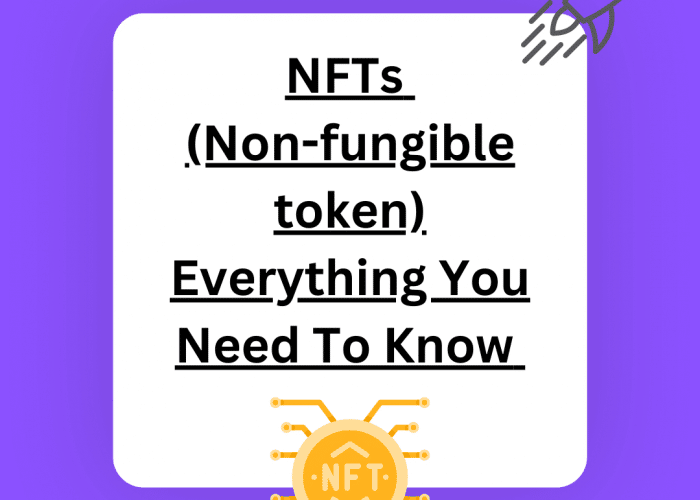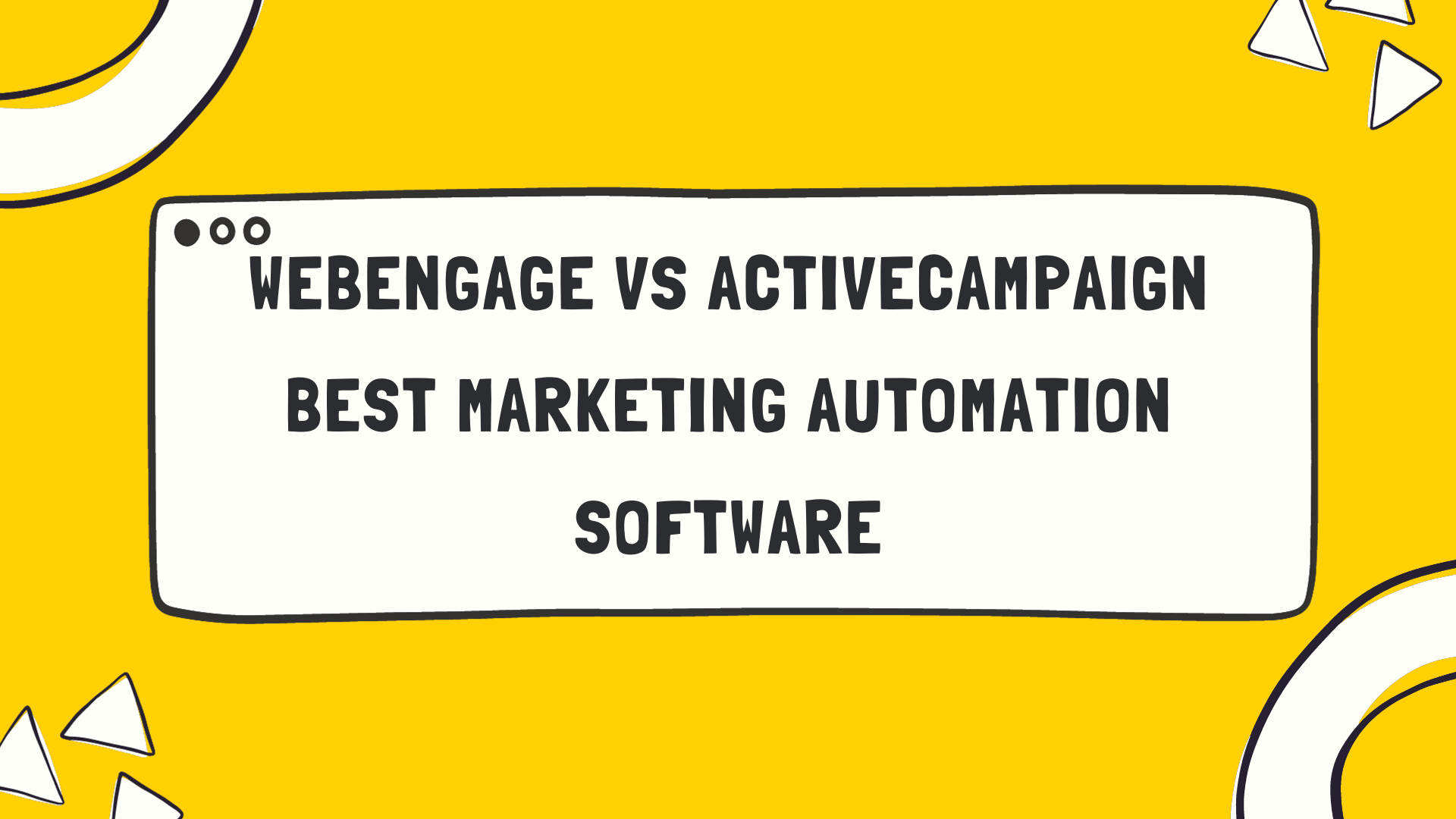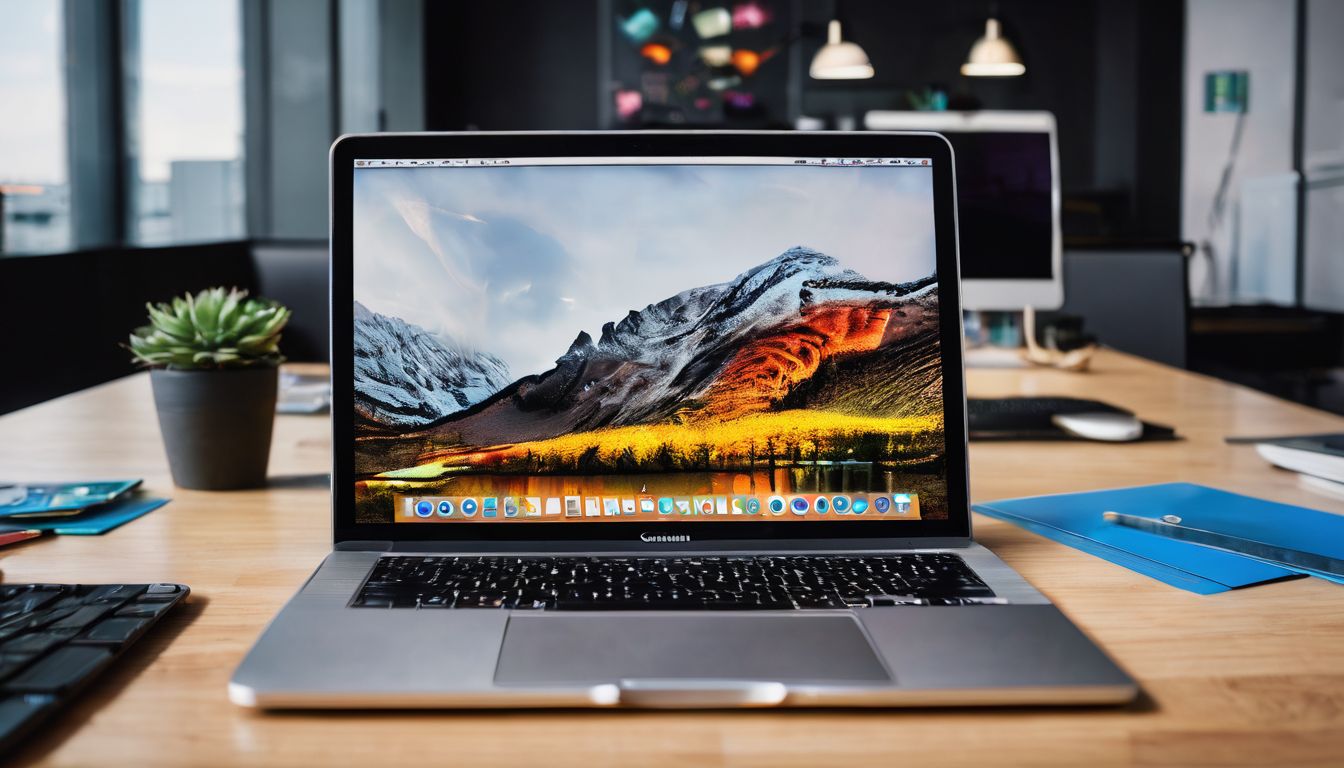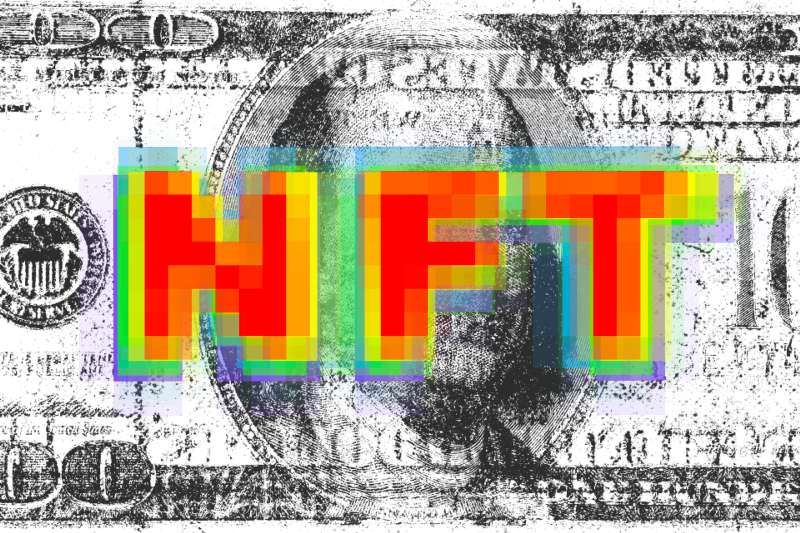
Welcome to the bizarre, fascinating, and wacky world of NFTs!
Think again if you believe you are an expert on digital artwork and collectibles?
Non-fungible tokens, or NFTs, are upending the art market and altering the rules for both artists and collectors.
So buckle up, take a seat, and prepare for a journey through the unexplored territory—the new frontier of ownership and creativity in the digital era.
What are NFTs
Non-Fungible Tokens, are special digital assets that signify ownership of or proof of the authenticity of a certain thing or piece of material, such a piece of art, a video, some music, or even some tweets.
Blockchain technology, a distributed, decentralized ledger that securely and openly records transactions, is used to generate NFTs.
History of NFTs
NFTs have a long history that begins with the invention of cryptocurrencies and the advancement of blockchain technology. The majority of tokens in the early days of cryptocurrencies were fungible, which means they could be exchanged and had an identical value.
The concept of non-fungible tokens, on the other hand, started to take shape in the early 2010s as a mechanism to represent distinctive assets on the blockchain.
The initial NFTs were mostly employed in the gaming industry as special in-game objects that could be purchased, sold, and exchanged. The use base has grown over time to include businesses outside of gaming, like art and collectibles.
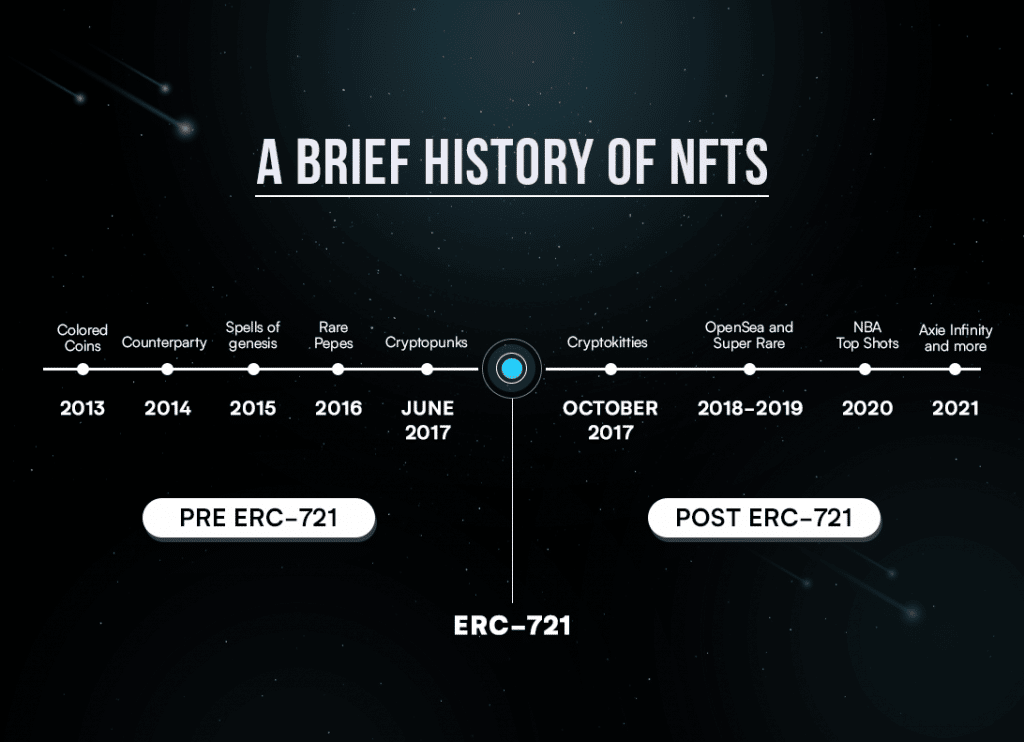
NFTs have significantly increased in popularity and attention over the past several years, particularly in the art world. This is because they can offer a fresh means for creators to earn money from their work and for collectors to acquire and exchange one-of-a-kind works of cybernated art.
How Do NFTs Work
Blockchain technology is used by NFTs to store and manage certain digital assets.
A digital asset must first be created, such as a piece of music, artwork, or video. Then, a hash—a distinctive identifier that acts as the digital asset’s fingerprint—is assigned to it.
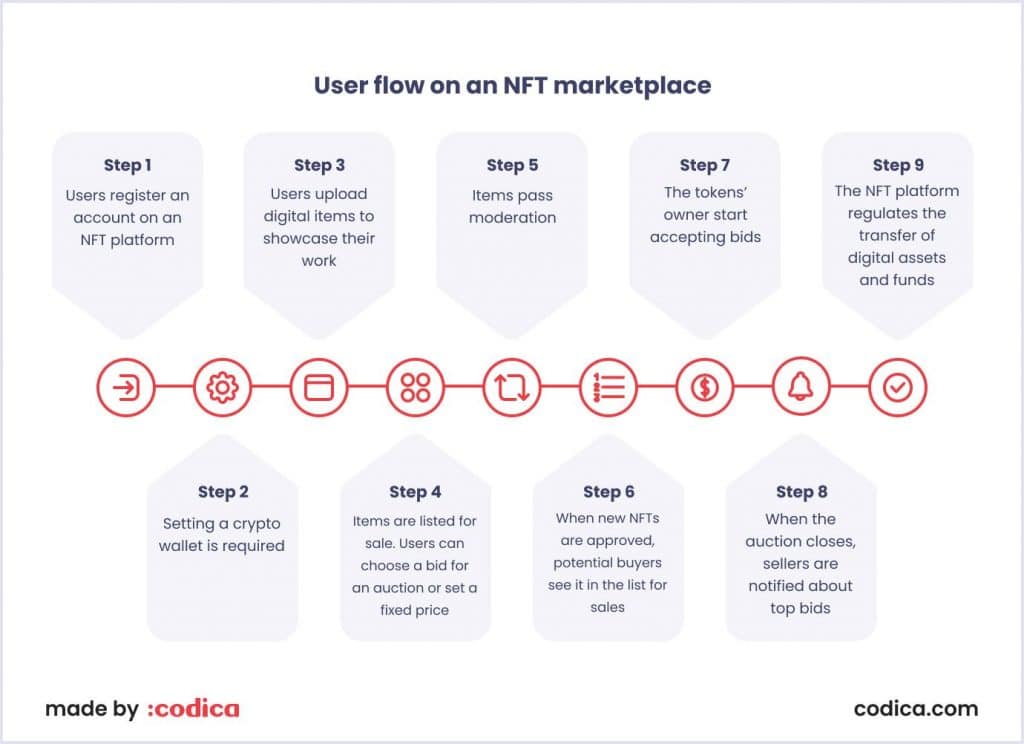
The digital asset and its hash, along with details on its ownership and origin, are then added to a blockchain. The blockchain token that is issued when an NFT is formed acts as ownership documentation for the digital asset.
After being produced, the NFT can be purchased, sold, and traded on a variety of platforms that accept NFT transactions. A transaction containing the agreed-upon price and the token that stands in for the NFT is submitted to the seller by a buyer seeking to buy an NFT. The NFT is subsequently transferred to the buyer’s digital wallet when the transaction has been validated and processed by the blockchain network.
The fact that NFTs are unique and cannot be replicated gives the digital asset more value and authenticity. This is one of its main advantages. Additionally, the ownership and provenance of the digital asset may be easily monitored and validated because they are maintained on a decentralized and open blockchain.
In summary, they work by using blockchain tech to record and track unique digital assets, and provide proof of ownership for these assets. They offer a new way for artists, creators, and collectors to monetize and trade digital content in a secure and transparent manner.
Examples Of NFTs
Here are five recent examples:
- “Everydays” The First 5000 Days” by Beeple: In March 2021, Beeple’s digital artwork sold for a record-breaking $69 million at a Christie’s auction. The artwork is a collage of 5000 daily drawings that Beeple created over a 13-year period.
- “The First 5000 NFTs” by CryptoPunks: CryptoPunks are one of the earliest and most popular NFT projects, and they consist of 10,000 unique 8×8 pixel art characters. In December 2021, a single CryptoPunk sold for a record $69 million, making it one of the most valuable artworks ever sold.
- Crossroads” by Grimes: In February 2021, Grimes created a collection of art called “Crossroads,” which sold out within minutes of its release. The collection included six NFTs, each representing a unique digital world, and sold for a total of over $5 million.
- “CryptoKitties”: CryptoKitties is a popular NFT game where players can buy, sell, and breed virtual cats. In December 2017, CryptoKitties became one of the first widely popular NFT projects, and its success helped to popularize the use of NFTs in the gaming world.
- “Mars House” by Mad Dog Jones: In January 2021, Mad Dog Jones created an NFT called “Mars House,” which is a virtual house located on the planet Mars. The NFT sold for $500,000 and includes a virtual tour of the house, as well as a series of unique experiences and adventures for its owner.
These examples showcase the diverse range of NFTs that are being created and sold today and demonstrate their potential as a new form of digital asset.
How is an NFT Different From Other Cryptocurrencies
NFTs are different from other cryptocurrencies in several key ways:
| Point Of Difference | NFT | Cryptocurrencies |
|---|---|---|
| Fungibility | Non-fungible. | Most cryptocurrencies, such as Bitcoin and Ethereum, are fungible. |
| Ownership & provenance | Provide a way to prove ownership and track the history of a digital asset. | No tracking of ownership is possible. |
| Purpose | Designed to represent ownership of unique digital assets, such as art, music, or videos. | Cryptocurrencies are designed to be used as a medium of exchange or store of value. |
| Transferability | Can be bought, sold, and traded on various marketplaces that support NFT transactions. Can be easily transferred without intermediary. | Cryptocurrencies can be bought, sold, and traded on cryptocurrency exchanges. Cannot be easily transferred and requires intermediary. |
Benefits of NFTs
In the digital age, NFT offer a number of advantages, such as:
- Digital content monetization: NFTs offer a fresh method for artists, musicians, and other content creators to make money off of their works. By doing so, they can establish their credibility as creators and get just rewards for their efforts.
- Intellectual property rights protection: NFTs provide a safe and open method to safeguard the rights of digital artists. They make sure that ownership and provenance of digital assets can be easily monitored and validated by utilizing a decentralized blockchain.
- Enhanced authenticity: NFTs give value and authenticity to the digital item because they are distinct and impossible to copy. For those who are collectors or fans of digital art, music, and other content, this makes them a worthwhile investment.
- Accessibility: They provide a brand-new type of digital asset that is simple to trade and transfer without the need for a centralized middleman. This makes it possible for everyone to engage in the digital economy, regardless of geography or financial situation.
- Protection and preservation of history: Digital inventions are made possible by NFTs. The ownership and provenance of digital assets may be easily monitored and validated over time by putting NFTs on a decentralized blockchain.
How to Buy and Sell NFTs
Want to trade NFTs? Here are ways in which they can be purchased or sold:
- NFT marketplaces: You can purchase the NFT collections on a number of NFT markets, including OpenSea, Rarible, SuperRare, and Nifty Gateway. You can explore and buy NFTs from a range of artists, performers, and content producers using such marketplaces.
- From creators: Through their websites or social media accounts, creators can also be contacted directly to purchase NFTs. You can do this to directly support the artists and perhaps buy special or uncommon NFTs.
- Exchanges for cryptocurrencies: A few exchanges for cryptocurrencies, including Binance, Huobi, and Kraken, currently permit users to purchase and sell NFTs.
- Online auctions: Some NFTs are offered for sale through websites like Christie’s and Sotheby’s. You can participate in these auctions, place bids on rare and valuable NFTs, and compete with other purchasers to win the asset.
- Art shows and fairs: Some NFTs are offered for sale at shows and fairs, including Art Basel and New Art Academy. These gatherings provide you with the chance to see and buy NFTs in person, as well as a fantastic chance to interact with the designers and other NFT aficionados.
Is There Any value In Owning NFTs or Digital Art
In 2023, the value of digital art including NFTs will have increased significantly. Demand for NFTs has increased as a result of a rising understanding of the worth and potential of digital art as a collector asset.
NFTs are now being used by a lot of artists, musicians, and content producers as a way to monetise their digital works and establish their creative brands.
As a result, NFTs are getting more valuable and the market for them is growing more competitive. For this reason, there have been record-breaking sales and prominent artist-brand collaborations, highlighting the expanding importance of NFTs in the field of digital art.
It’s crucial to remember that, like other collecting goods, the value of NFTs is mostly determined by supply and demand. Its values can fluctuate, but many people think they have a lot of long-term potential as attractive asset classes.
The increasing value of digital art gives a special opportunity in the digital age, regardless of whether you are an artist, collector, or simply interested in investing in the asset.
Is NFT Adoption Inevitable
In the worlds of art, collectibles, and finance, NFT adoption is undoubtedly on the increase and has attracted a lot of attention. It is a well-liked option for artists, singers, and content creators wishing to monetise their work thanks to the ability to uniquely identify and verify ownership of digital assets using blockchain tech.
Numerous high-profile NFT sales, including world-record purchases of digital artwork, music, and even tweets, have occurred recently. As a result, the technology are receiving more media coverage and are being investigated by more people and businesses.
It’s important to keep in mind that NFTs use or adoption is still in its early phases and that the NFT industry is very speculative. The value and potential in the long run is still quite unclear, and it is unclear how the market will change over time.
In conclusion, NFT usage is undoubtedly increasing, although the area is still young and developing. When exploring the world of NFTs, whether you’re an investor, collector, or artist, it’s crucial to be cautious and well-informed.
Conclusion
In conclusion, it’s obvious that NFTs are here to stay because they’ve taken the world by storm. They are changing the way we think about digital ownership and giving creatives and artists new opportunities to make money from their work.
No matter if you’re a collector, a maker, or a skeptic, you can’t deny the influence they are having on society.
Therefore, the next time someone asks you about NFTs, you may respond, “I’m an expert, I’ve got the whole thing worked out…just kidding, it’s still the wild west out there, but it’s an exciting time to be a part of it,”
Are you also intrigued by the world of business books?
Here is a detailed blog for you to pick the best ones: Best Startup Books For Entrepreneurs To Read In 2023
Read More
What Are NFTs And How Will They Impact Global Industries?
Frequently Asked Questions (FAQs)
What is the highest selling NFT right now?
Even in 2023, ‘The Merge’ remains the most expensive NFT. It was sold at $91.8 million during the month of December 2021. The Merge is held by 28,983 collectors.
How can I make money from NFT?
As a creator, you can sell your art for a price to make money and as a buyer you can trade the purchased art at a higher price later.
Where can I buy NFTs?
You can buy NFTs through:
NFT marketplaces
From creators
Exchanges for cryptocurrencies
Online auctions
Can I buy & sell NFTs?
Yes, you can buy and sell NFTs (non-fungible tokens) on various online marketplaces that specialize in NFT transactions.
NFTs are unique digital assets that are verified on a blockchain network, such as Ethereum. They can represent a wide range of digital content, including artwork, music, videos, and more. NFTs are bought and sold using cryptocurrency, such as Bitcoin or Ethereum.

